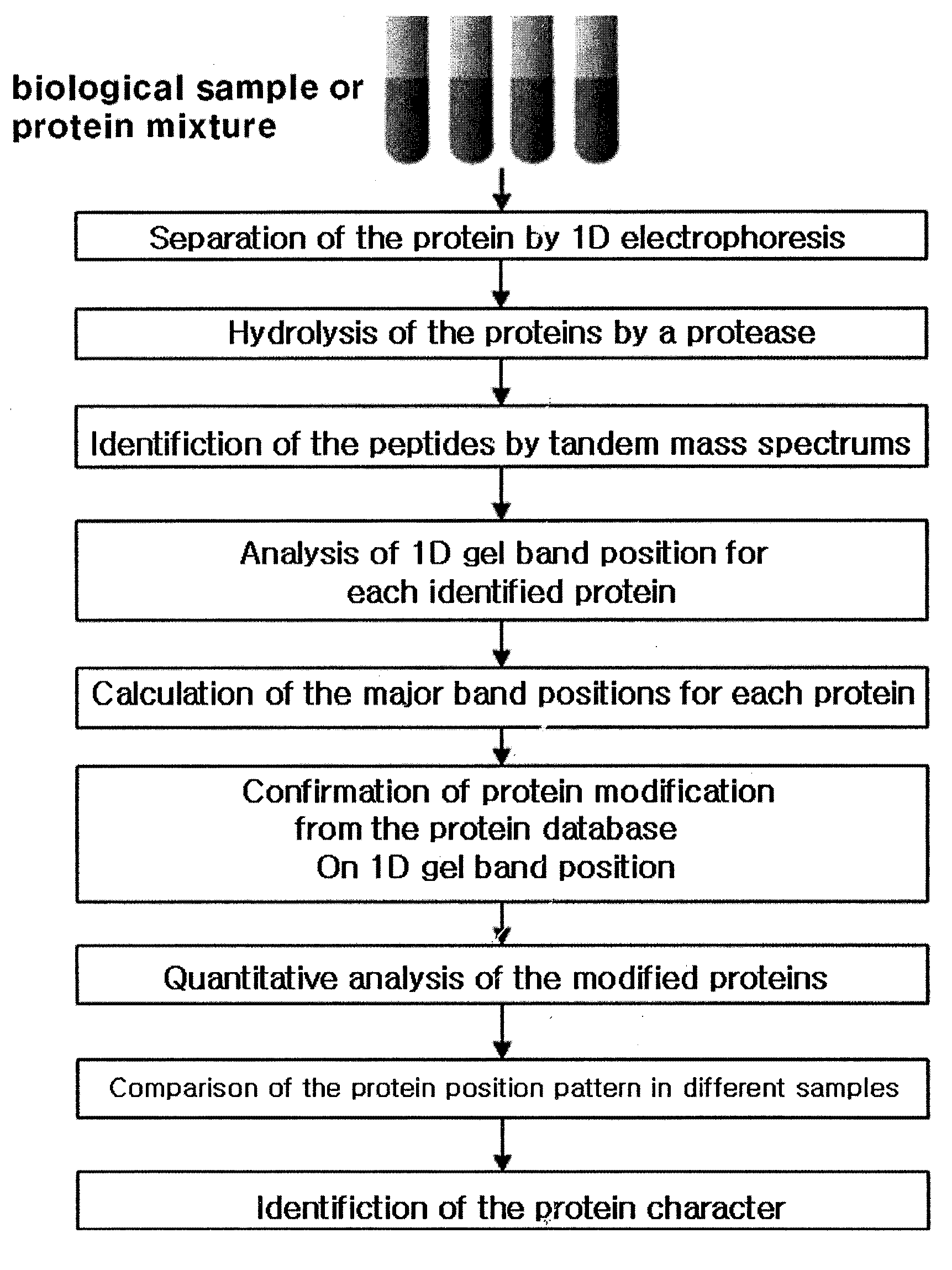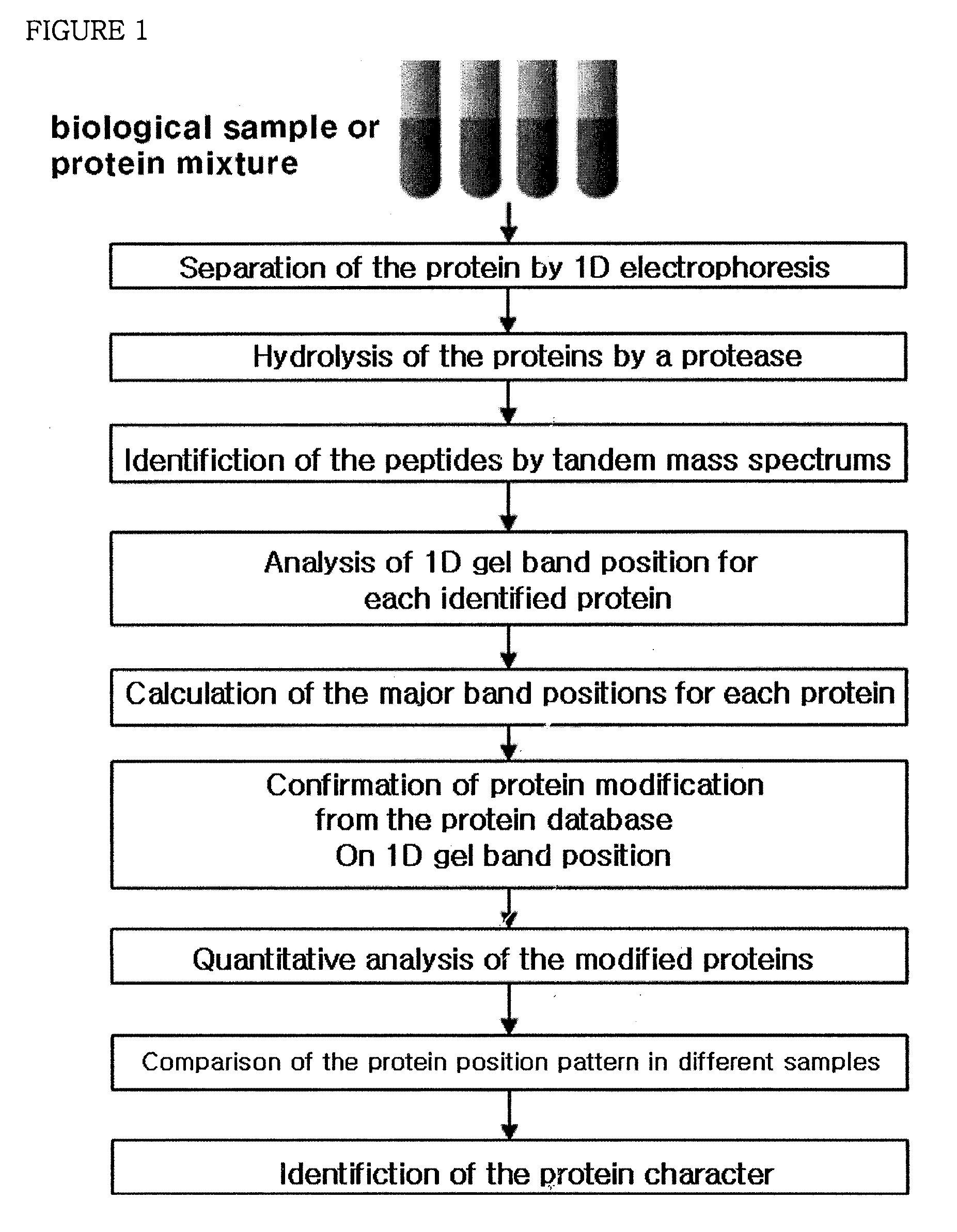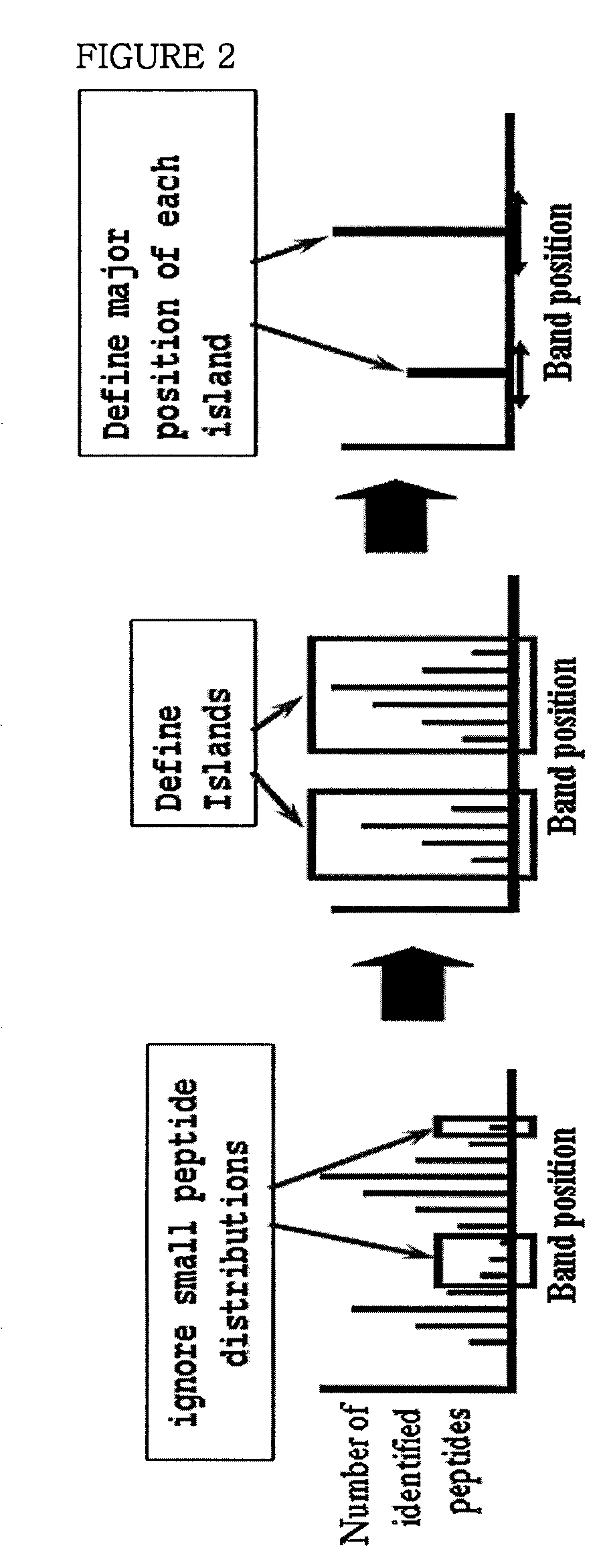System of analyzing protein modification with its band position of one-dimensional gel by the mass spectral data analysis and the method of analyzing protein modification using thereof
a technology of mass spectral data and protein modification, which is applied in the field of system of analyzing protein modification with its band position of one-dimensional gel by the mass spectral data analysis and the method of analyzing protein modification using thereof, can solve the problems of not being able to distinguish between the three possible cases, and not being able to analyze the mass of a protein that exists in different status in the same sample, so as to facilitate quantitative analysis of modified proteins, simplify the complex one-dimensional gel protein pattern
- Summary
- Abstract
- Description
- Claims
- Application Information
AI Technical Summary
Benefits of technology
Problems solved by technology
Method used
Image
Examples
example 2
Analysis of Protein Modifications in Different Species
[0093]Protein identification and island analysis were performed with human brain tissues and Pseudomonas putida KT2440 bacteria by the same manner as described in Example 1, the experiment with human serum samples. But in this example, human brain tissue samples proceeded to one-dimensional electrophoresis and 40 bands were separated from one-dimensional gel. Each band was treated with trypsin and then peptide identification was performed by using fused-silica tubing (Phenomenex, USA) filled with 10 cm of Aqua 5μ C18 with a mass spectrometer (LT LTQ / MS, Linear Ion Trap Mass Spectrometer, Thermo Electron Corp., USA). 42 bands were extracted from the bacteria samples and the peptide mixture hydrolyzed with trypsin was inputted in 250 μm tubing (UK) filled with 2-3 cm of SCX cation exchange materials (Whatman column, UK) and then tandem mass spectrums were obtained by a mass spectrometer (LT LTQ / MS, Linear Ion Trap Mass Spectrometer...
PUM
 Login to View More
Login to View More Abstract
Description
Claims
Application Information
 Login to View More
Login to View More - R&D
- Intellectual Property
- Life Sciences
- Materials
- Tech Scout
- Unparalleled Data Quality
- Higher Quality Content
- 60% Fewer Hallucinations
Browse by: Latest US Patents, China's latest patents, Technical Efficacy Thesaurus, Application Domain, Technology Topic, Popular Technical Reports.
© 2025 PatSnap. All rights reserved.Legal|Privacy policy|Modern Slavery Act Transparency Statement|Sitemap|About US| Contact US: help@patsnap.com



